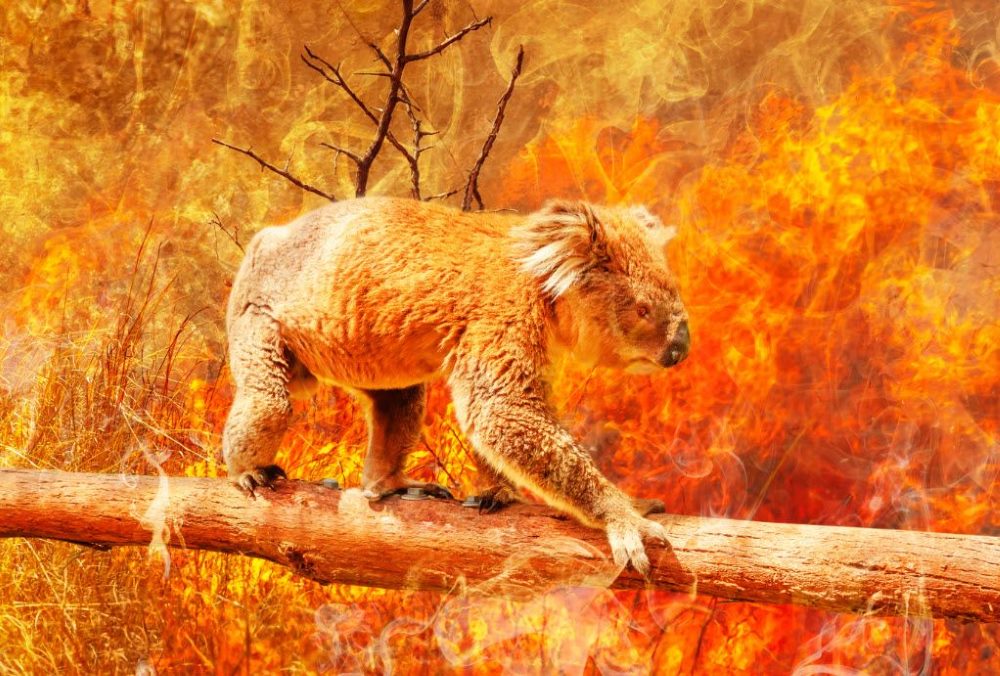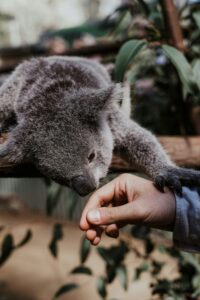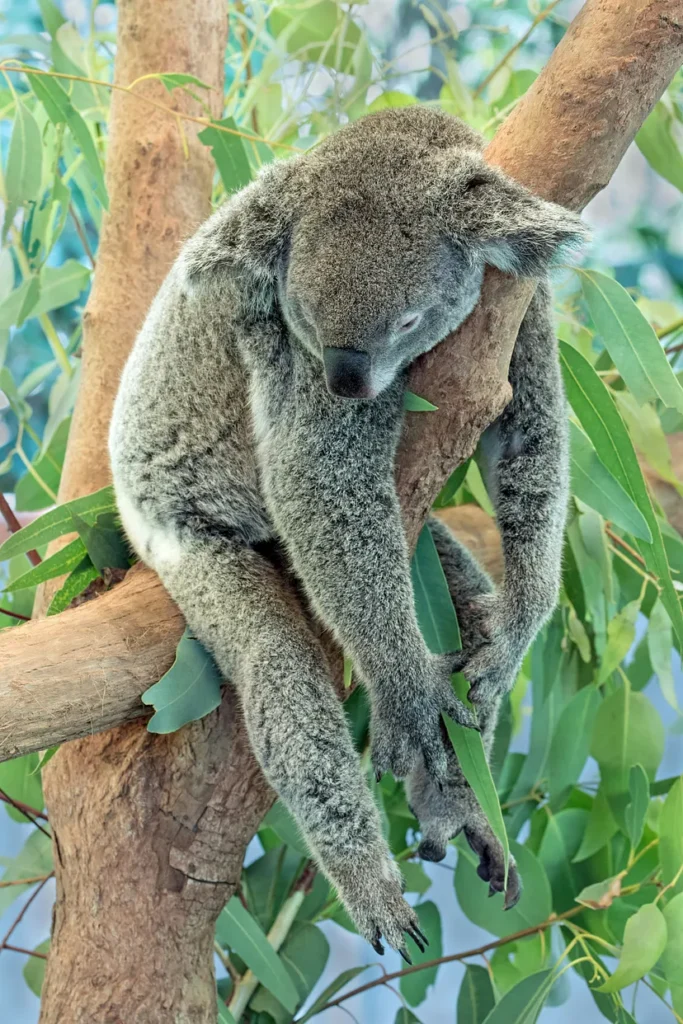What a Tragedy – Koalas Extinct Within Thirty Years?
Koalas are a unique Australian asset. Their restricted lifestyle in trees (arboreal), dependence on specific Eucalyptus leaves, and complementary digestive processes not seen in any other animal, reinforce their value to the animal kingdom as a biological anomaly.
In this, the final part of the series “My Life with Koalas,” I examine their uncertain future and possible extinction. The previous parts examined the trials and tribulations of researching koala digestion and their dependence on a 2-meter cecum.
The series starts here, and last month, I highlighted a separate story in ‘Simply Wild’ about their remarkable weening process (here).
In 2022, koalas were officially listed as an endangered species.
They will likely become extinct within thirty years without intervention and greater understanding.
A Long but Sad History:
Koala populations have been on a decline in recent years. Land clearing and urbanization are destroying their natural habitat, and the devastation of disease and bushfires is a constant threat to their existence.
Early in the twentieth century, thousands of animals were hunted and slaughtered for their fur, almost sending the species to extinction at that point.
It is estimated that 8 million koalas were killed for their fur over 60 years in 1800’s.
In one year alone, 400,000 pelts were shipped to the USA.
Thankfully, koala hunting was banned around 1927 when the US Secretary of Commerce (Herbert Hoover, who later became President) banned the import of koala skins.
At this stage their numbers were reduced to only a few hundred in all but one Australian state, Queensland. Even that didn’t last. In a single month, 800,000 koalas were hunted and killed from the last stronghold, Queensland.
Crippling Disease – A Vicious Circle
A bacterial infection in koalas – chlamydia, like the sexually transmitted disease in humans – has plagued koala populations for decades and is now one of the major causes of mortality. In some situations, it can infect 100% of the population.
It leads to blindness, severe bladder inflammation, infertility, and death. Researchers have recently discovered that antibiotic treatment may create further problems, by upsetting the gut microbes they depend on to digest their staple diet of Eucalyptus leaves.
Surveys from treatment facilities have found that chlamydia causes more deaths in koalas, except for injury from cars and dog attacks.
Koalas are so adapted to tree life that they seldom go to the ground. When they do, their clumsiness makes them easy targets for cars and trucks as they cross over roads, or as prey for dogs when they try to get to new vegetation.
Chlamydia can also be directly transferred to the young when they consume pap during the weaning process (see the story highlighted above).
It is now thought that a specific koala virus – Koala Retrovirus type B (like human HIV) accentuates the infection rate.

Devastating Bushfires
Bushfires have always been a characteristic of life in Australia and another challenge for koalas. However, a recent change in the weather pattern has led to more intense and frequent bushfires.
During bushfires, instinct tells koalas to climb higher in the tree, usually with disastrous consequences.
Following the bushfires in the 1850s and 1930s, koalas were declared extinct in several Australian states. In the following year, the Black Summer fires along the east coast of Australia are reported to have killed over 60,000 koalas.
In 2021 fires in one of the healthiest populations on Kangaroo Island, South Australia reduced the population by 70%.
If it is not bushfires, it is floods. Devastating floods along the east coast of Australia in the last two years have destroyed whole towns, destroyed even more koala habitats, and separated young joeys from their mothers.
Habitat destruction – Nowhere to Run
The relocation of koalas to islands off the coast of Victoria and South Australia in the 1920s dramatically increased their numbers, saving the species.
One might think this is a viable solution to saving the species, but even this is not straightforward. Koalas in one region become so adapted and dependent on a particular type of Eucalypt foliage that they do not cope with being moved.
In other situations, relocation from the thriving island populations is not viable because their inbreeding and low genetic adaptability make them extremely susceptible to disease, infertility, and deformities.
Deforestation and clearing to make way for agriculture and urbanization are also devastating koala numbers.
Protocols demand that areas of Eucalyptus Forest be left for koalas. Even when this does happen, it is of limited value. Leaving koalas with a limited number of trees to feed on and removing their ability to transition to other trees freely when these become depleted makes them more susceptible to cars and dogs.
An Unsympathetic Government
One would think governments would be keen to protect one of their icons, symbolizing Australia’s unique fauna, but even this is against the koala.
While our politicians drag out Blinky Bill for foreign visitors so they can hold a koala, and tout what a unique and wonderful animal they are, in the background they implement bills and legislation that actually assist destruction of their habitat.
Much of the Koala’s natural habitat is on private land. Governments attempting to pacify rural landowners pass bills that make it easier for them to destroy koala habitats.

The Final Paradox
History has shown that koalas have a strong survival instinct despite their nuances. With some help and support, one would hope they can maintain a presence in what little natural environment they have left.
They are not aggressive animals by nature and have been seen to cohabitate happily with humans in suburban parks and reserves.
Is it asking too much that we give some time and investment back to them – an Australian icon?
A lifetime of struggle, abuse, and neglect, and there is still so much that we do not know about how they function.
How much can a koala bear?
Only time will tell if we have left it too late.
You Can Help!!!
September is ‘SAVE’ the Koala month
I have written this series to raise money for the Australian Koala Foundation. If you want to donate, buy a cup of coffee at Ko-fi.
I don’t know if koalas like coffee, but we can change it to Eucalyptus tea!
It would be great if you can join with me in saving these wonderful animals.


